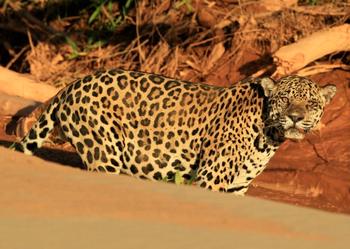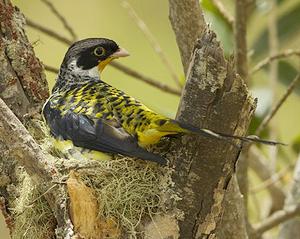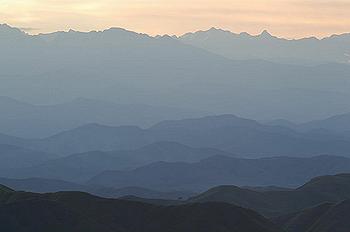
JEJU Island, South Korea, September 14, 2012 (ENS) – Jaguar and ocelots stalk the forest and harpy eagles soar high above Bolivia’s Madidi National Park, where more than 1,088 bird species, 90 species of bats, some 300 types of fish, and 12,000 plant varieties have been identified.
This remote park in northwest Bolivia may be the most biologically diverse place on Earth, according to a comprehensive survey released Thursday at the IUCN World Conservation Congress, an international gathering of conservationists meeting on Jeju Island.

The great diversity of species live in Madidi National Park because it spans altitudes and habitats that range from lowland tropical forests of the Amazon to snow-capped peaks of the High Andes.
The list of known species in Madidi was published by the Bolivian Park Service, SERNAP, and the New York-based Wildlife Conservation Society.
The report compiles the work of more than 50 scientists from WCS, Bolivian Fauna Collection, Bolivian National Herbarium, Amazon Conservation Association, Armonia, Missouri Botanical Garden and others, some of whom have worked in the park for 15 years.
At SERNAP’s request, the scientists gathered at a workshop in late 2008 to share their knowledge about Madidi National Park, how many species Madidi contains and its conservation needs for the future.
The newly published list shows that there are more than 200 species of mammals in the park ranging from the 300-kilogram (661-pound) lowland tapir, an Amazonian herbivore, to the tiny insectivorous Spix’s disk-winged bat that weighs just four grams (.14 ounces).
The park contains 1,868 species of vertebrates, including 1,088 species of birds that range in size from eagles to hummingbirds – 11 percent of the world’s bird species. Only 11 countries have a greater number of bird species; the entire United States contains fewer than 900 bird species.

And those are just the species documented to date. Two-thirds of the park’s total biodiversity has yet to be formally registered or observed by scientists, pointing to the need for more research in the region before climate change alters even more the biodiversity of the world’s mountains.
“With Madidi’s almost 6,000-meter (19,685 feet) altitudinal range, no other protected area captures the diversity of South American habitats that pushes these numbers through the ceiling. All the scientists who contributed to this compendium feel privileged to work in Madidi, and we are all very happy to help SERNAP promote the national and international conservation importance of the area,” said WCS’s Madidi Landscape Program Director Dr. Robert Wallace.
Madidi National Park is one of the top tourist attractions in Bolivia and part of a larger protected region known as the Madidi-Tambopata Landscape, one of the largest such complexes in the world.
Oscar Loayza of Bolivia, who works with the WCS on the Greater Madidi-Tambopata Landscape Conservation Program was presented with the Kenton Miller Award for Innovation in Protected Areas Management this week at the IUCN’s World Conservation Congress.
Loayza was chosen by the international jury for his development of initiatives that strengthened indigenous participation in the management of the Madidi-Tambopata Landscape. The entire area is facing the challenges of large infrastructure projects, roads, dams, oil exploration and small scale mining.

Loayza promoted alliances among the Bolivian park service, conservationists and indigenous peoples, building upon Bolivian government policies to consolidate indigenous territorial and representation rights brought in by President Ivo Morales, the first Bolivian leader of indigenous heritage.
Still much is unknown about Madidi National Park, particularly in the tropical montane or cloud forests between 1,000 and 3,000 meters (3,280 and 9,842 feet).
“This important compendium emphasizes just how poorly known the cloud forests of the Tropical Andes really are,” said Dr. Cristian Samper, president and CEO of the Wildlife Conservation Society. “Apart from their biodiversity and wildlife importance, they are critical from a watershed management perspective and are aesthetically beautiful.”
“The Wildlife Conservation Society is proud to be assisting the Bolivian government in the conservation of these magnificent places,” Samper said.
WCS says the organization’s work in the Madidi-Tambopata Landscape has been made possible by the Gordon and Betty Moore Foundation, The John D. and Catherine T. MacArthur Foundation, the blue moon fund, the Beneficia Foundation and the Disney Worldwide Conservation Fund, among other supporters.
Copyright Environment News Service (ENS) 2012. All rights reserved.
© 2012, Environment News Service. All rights reserved. Content may be quoted only with proper attribution and a direct link to the original article. Full reproduction is prohibited.
